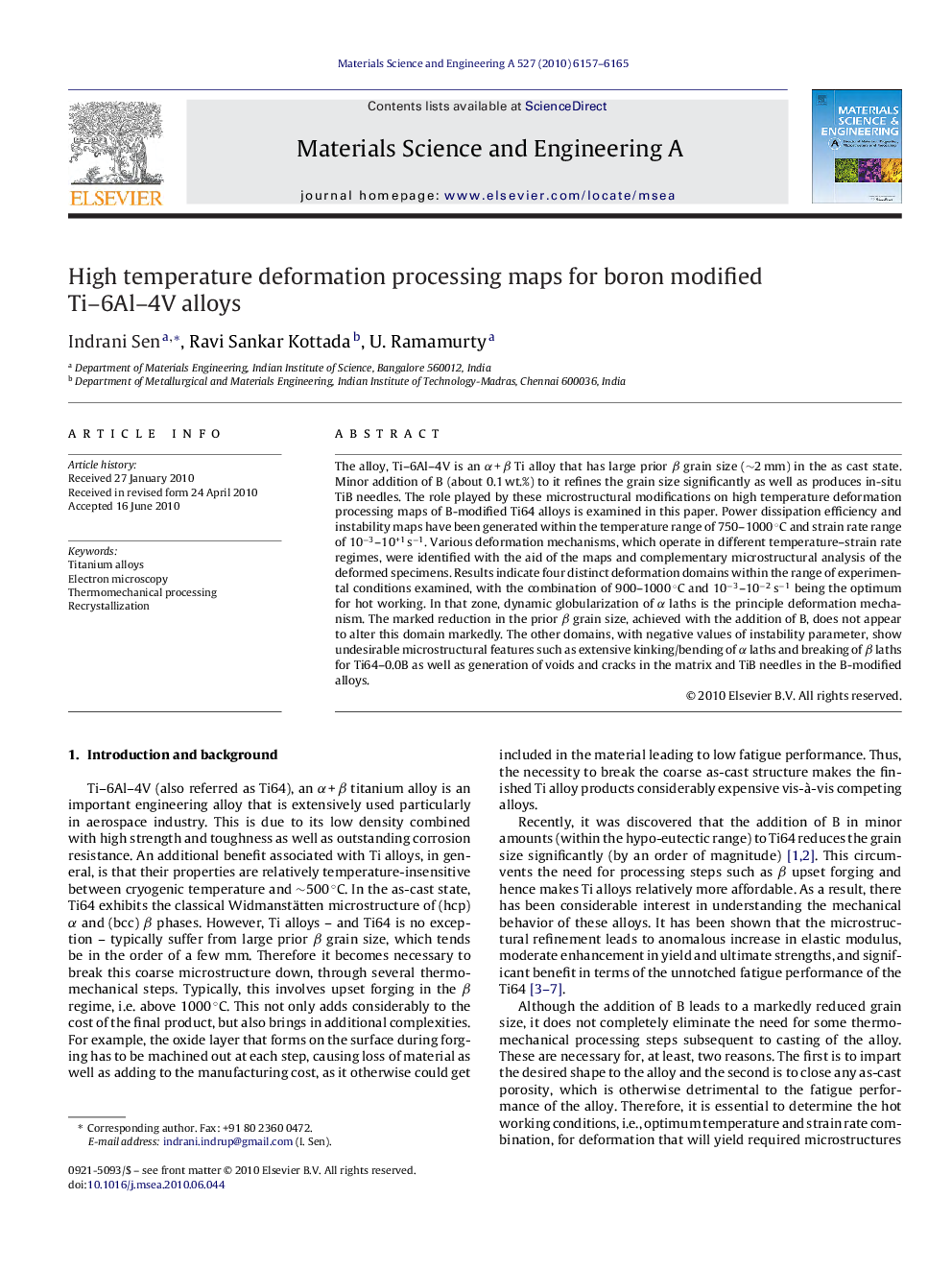| Article ID | Journal | Published Year | Pages | File Type |
|---|---|---|---|---|
| 1578981 | Materials Science and Engineering: A | 2010 | 9 Pages |
The alloy, Ti–6Al–4V is an α + β Ti alloy that has large prior β grain size (∼2 mm) in the as cast state. Minor addition of B (about 0.1 wt.%) to it refines the grain size significantly as well as produces in-situ TiB needles. The role played by these microstructural modifications on high temperature deformation processing maps of B-modified Ti64 alloys is examined in this paper. Power dissipation efficiency and instability maps have been generated within the temperature range of 750–1000 °C and strain rate range of 10−3–10+1 s−1. Various deformation mechanisms, which operate in different temperature–strain rate regimes, were identified with the aid of the maps and complementary microstructural analysis of the deformed specimens. Results indicate four distinct deformation domains within the range of experimental conditions examined, with the combination of 900–1000 °C and 10−3–10−2 s−1 being the optimum for hot working. In that zone, dynamic globularization of α laths is the principle deformation mechanism. The marked reduction in the prior β grain size, achieved with the addition of B, does not appear to alter this domain markedly. The other domains, with negative values of instability parameter, show undesirable microstructural features such as extensive kinking/bending of α laths and breaking of β laths for Ti64–0.0B as well as generation of voids and cracks in the matrix and TiB needles in the B-modified alloys.
